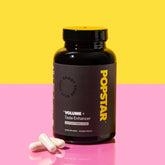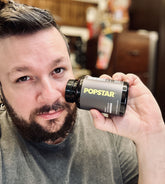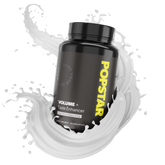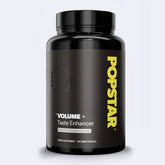Spermicide birth control is a non-hormonal contraceptive option that uses chemical agents to immobilize or destroy sperm before they reach an egg. It is widely available, inexpensive, and commonly used alongside barrier methods for additional pregnancy prevention.
Table of Contents
- What Is Spermicide?
- How Spermicide Works
- Types of Spermicide
- Effectiveness of Spermicide
- Spermicide and Condoms
- Benefits of Spermicide
- Potential Side Effects
- Comparing Hormonal and Non-Hormonal Options
- Safety, Use, and Best Practices
- Frequently Asked Questions
- References and Further Reading
- Disclaimer
What Is Spermicide?
Spermicide refers to a contraceptive substance designed to prevent pregnancy by deactivating or destroying sperm. It is a widely recognized non-hormonal contraceptive option often used by individuals who prefer to avoid hormonal birth control.
Spermicides are available in several forms including gels, foams, films, creams, and suppositories. Most over-the-counter spermicide products in the United States use the active ingredient nonoxynol‑9.
How Spermicide Works
Spermicides prevent pregnancy primarily by disrupting the sperm cell membrane. This reduces sperm motility and prevents sperm from traveling through the cervix.
Key actions include:
- Immobilizing sperm rapidly.
- Reducing sperm cell viability.
- Creating a physical barrier when used with specific forms like gels and foams.
Types of Spermicide
Common types of spermicide contraceptive products include:
- Gels
- Creams
- Foams
- Vaginal films
- Suppositories
Most contain nonoxynol‑9, although research continues on newer non-hormonal spermicide alternatives.
Effectiveness of Spermicide
Spermicide effectiveness varies depending on correct and consistent use. When used alone, typical-use failure rates are notably higher than many other contraceptive methods.
Effectiveness improves significantly when spermicide is combined with condoms or other barrier methods.
Spermicide and Condoms
Using spermicide with condoms can increase protection against pregnancy. However, spermicide-coated condoms are less common today because frequent exposure to nonoxynol‑9 may irritate tissues.
Key points:
- Combine spermicide gel or foam with a standard condom for added protection.
- Avoid multiple uses of nonoxynol‑9 if irritation occurs.
Benefits of Spermicide
Benefits include:
- Non-hormonal option.
- Widely available without prescription.
- Can be used only when needed.
- Works well as backup contraception.
Potential Side Effects
Common spermicide side effects may include:
- Vaginal or penile irritation.
- Increased risk of urinary discomfort.
- Sensitivity to nonoxynol‑9.
Individuals experiencing persistent discomfort should discontinue use and consult a healthcare provider.
Comparing Hormonal and Non-Hormonal Options
Spermicide represents a purely non-hormonal birth control option, making it attractive for individuals who cannot or prefer not to use hormones.
Non-hormonal options include:
- Condoms
- Copper IUD
- Fertility awareness methods
- Diaphragms with spermicide
Safety, Use, and Best Practices
To maximize spermicide effectiveness:
- Apply the recommended amount before intercourse.
- Reapply for each act of intercourse.
- Use with condoms for improved protection.
- Monitor for irritation, especially when using nonoxynol‑9.
Frequently Asked Questions
What is spermicide used for?
Spermicide is used to prevent pregnancy by deactivating sperm. It is often used alone or with barrier methods for added protection.
How effective is spermicide alone?
Spermicide alone is less effective than many other methods. Combining it with condoms improves pregnancy prevention.
Is nonoxynol‑9 spermicide safe?
Nonoxynol‑9 is generally safe for occasional use but may cause irritation, especially with frequent application.
Can spermicide cause irritation?
Yes, some users experience irritation or sensitivity. Switching products or discontinuing use may help.
Is spermicide hormonal?
No. Spermicide is a non-hormonal contraceptive option.
Can spermicide prevent STIs?
Spermicide does not protect against STIs. Condoms remain necessary for STI prevention.
How long does spermicide last?
Most spermicides work for one act of intercourse and require reapplication.
Can spermicide be used with condoms?
Yes, spermicide and condoms can be used together for better pregnancy prevention.
What are signs of spermicide sensitivity?
Redness, burning, itching, or unusual discomfort after use.
Is spermicide effective for emergency contraception?
No. Spermicide is not intended for emergency contraception.
References and Further Reading
- Reputable sexual health organizations
- National health service guidance on contraception
- Men’s health clinics and reproductive health specialists
- Peer‑reviewed publications on contraceptive effectiveness
Disclaimer
This article is for informational and educational purposes only and is not a substitute for professional medical advice, diagnosis, or treatment.




















































